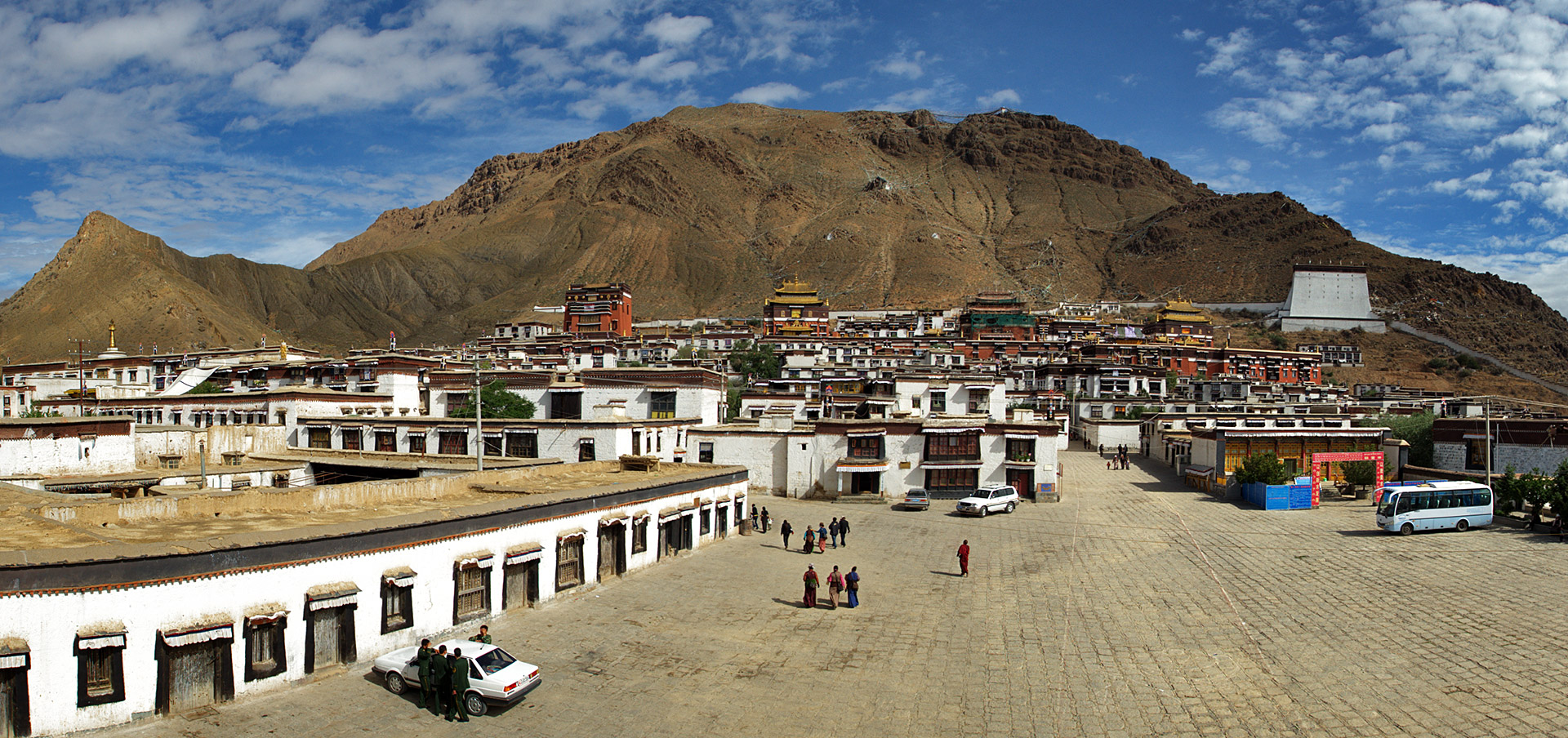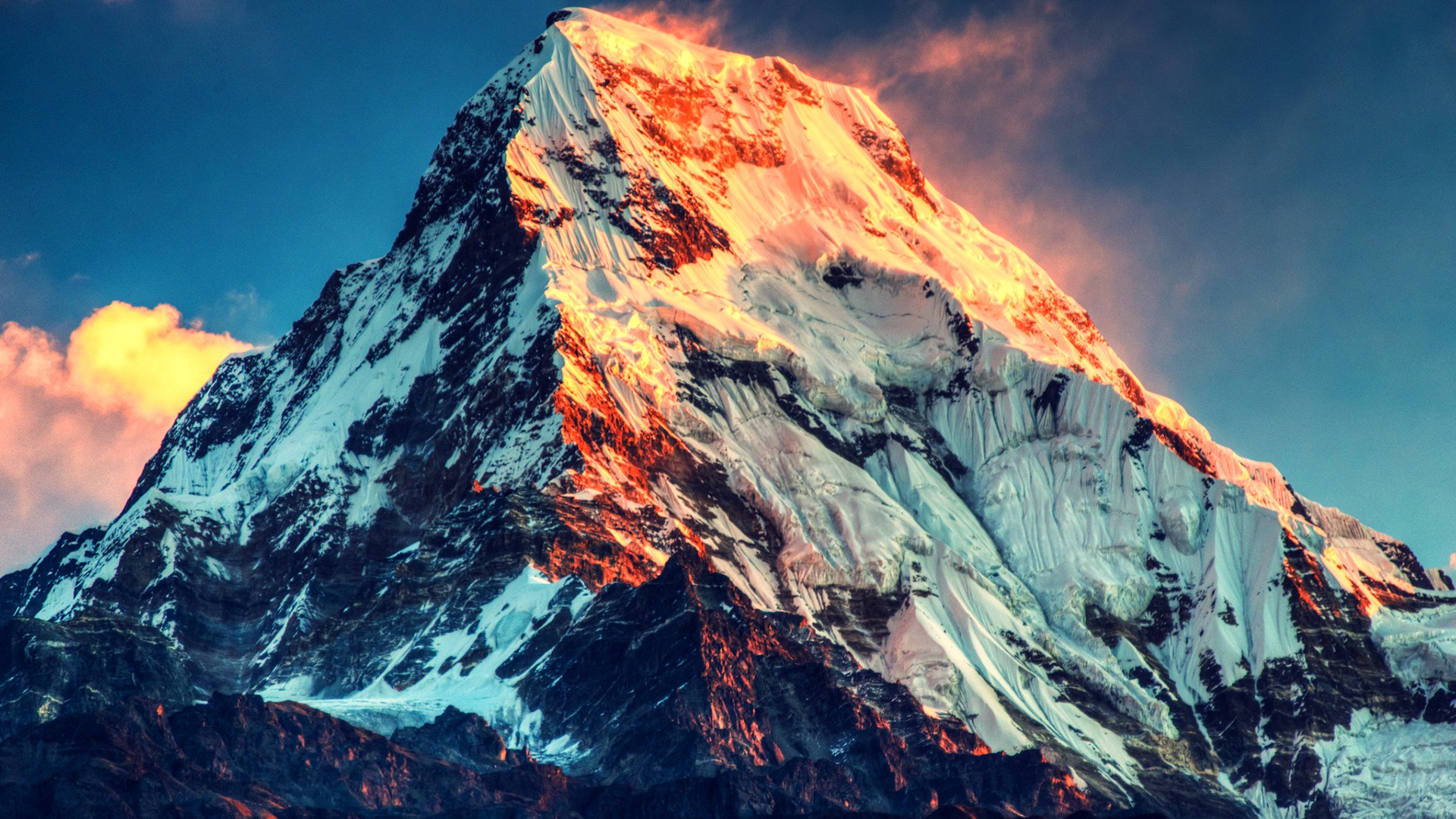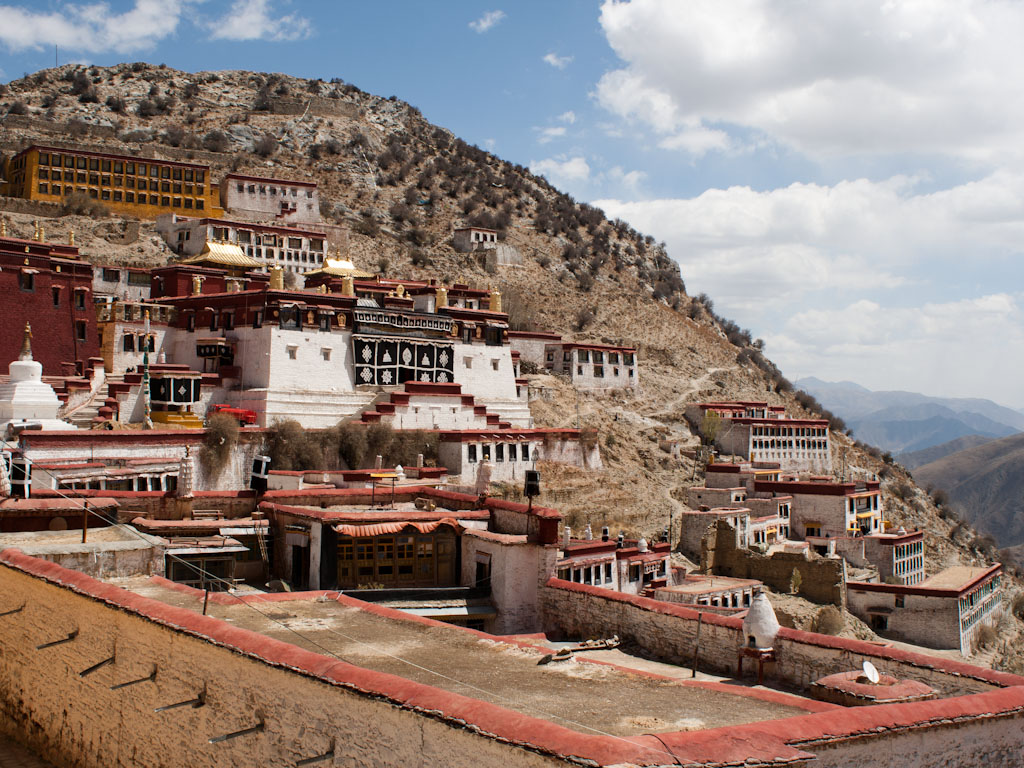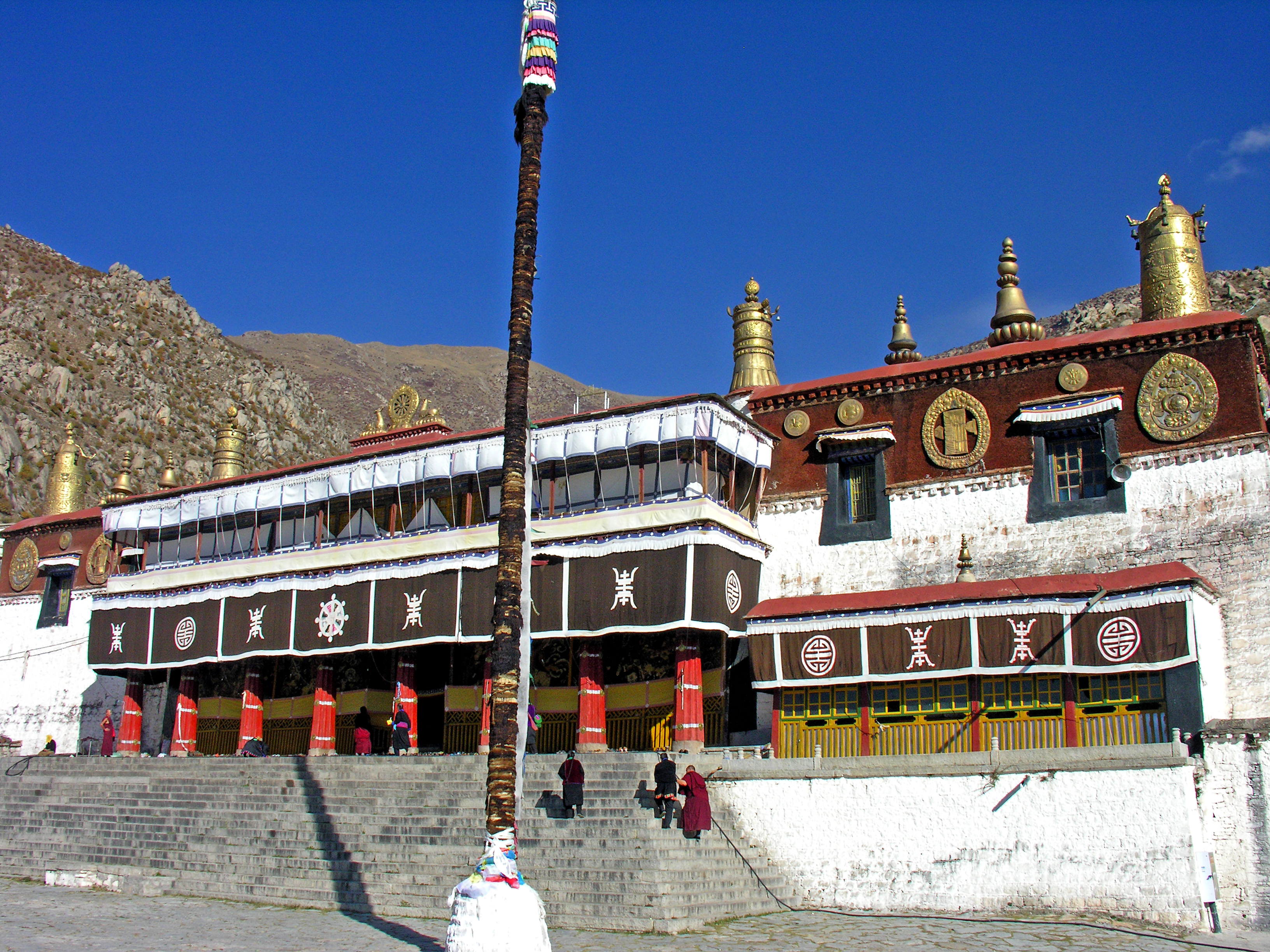As an important national cultural relic protection site, the Tashi Lhunphu Monastery (means “Auspicious Sumeru” in Tibetan language) is located on the southern slope of the Nyiseri Mountain to the west of Shigatse City. It is the largest monastery of the Gelug Sect in Rear Tibet, and the main stage where generations of Panchen Lamas carried out religious and political activities. It is one of the 4 main monasteries in Tibet, with the other three (Drepung Monastery, Sera Monastery and Ganden Monastery) in Lhasa.
In the 10th month of the Tibetan calendar in 1447, Ganden Zhuba, the most famous disciple of Master Zongkapa and lager known as the first Dalai Lama after his death, built the Tashilhunpo Monastery. The Coqen Hall, Sakyamuni Hall, Qamba Buddha Hall, Tara Hall, Buddha Dharma Protector Hall, Tsolhakang and other constructions were soon completed. Ganden Zhuba assumed the first abbot and gave the monastery the present name. The Tara Hall, Sunning Buddha Platform and others were built in later years. When Lobsang Qoigyi Gyaincain became the 16th abbot of the Tashilhunpo Monastery during the Ming Dynasty, a major round of expansion was carried out. Besides two golden-tiled halls, the Ngaba Zhacang Tantra College and many halls were added. At that time, the monastery had over 3,000 buildings and 51 subordinate monasteries, providing home for some 5,000 Lamas, which laid the foundation for today’s Tashilhunpo Monastery.
Taking up 300,000 square meters, the whole construction is tightly laid out like a mountainous city. The monastery not only enshrines the world’s largest glided Qamba Buddha bronze statue, but also many precious cultural relics such as the murals recording people’s lives.





